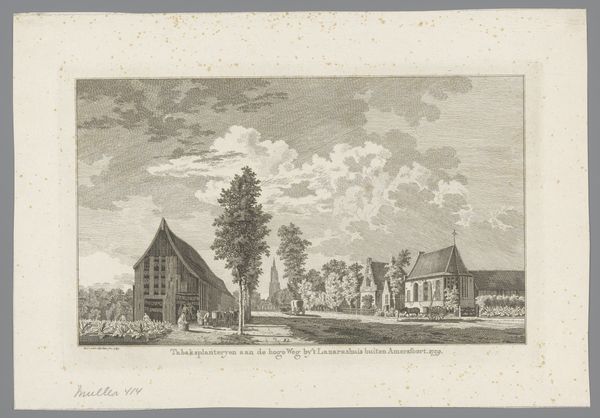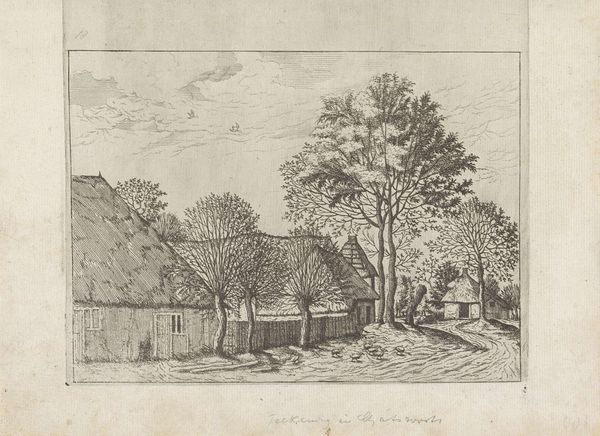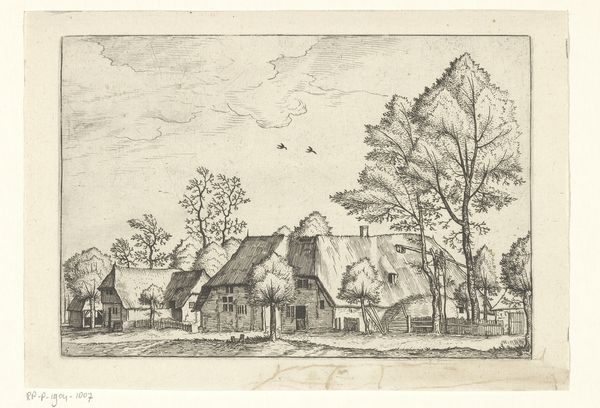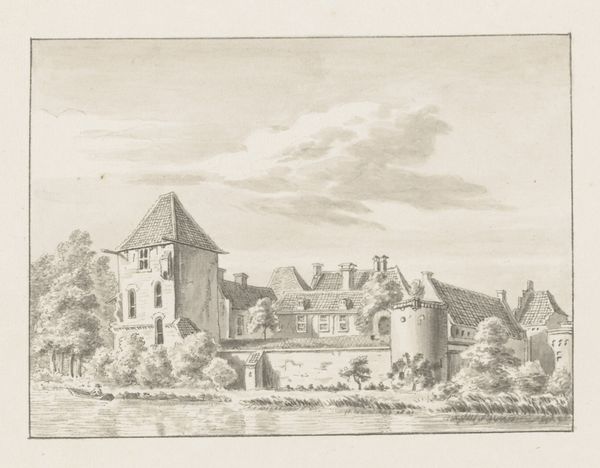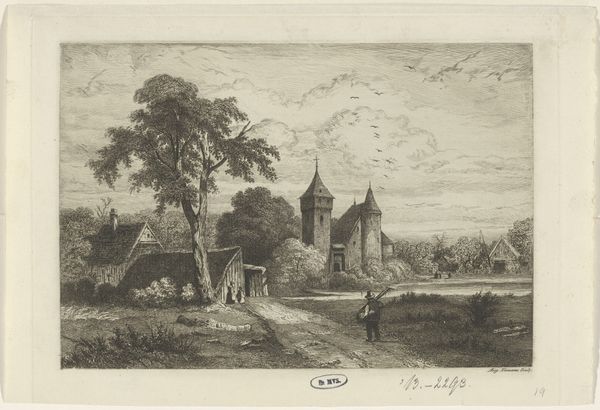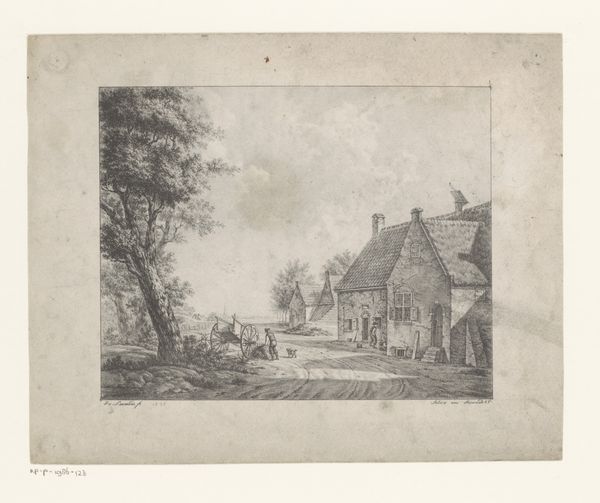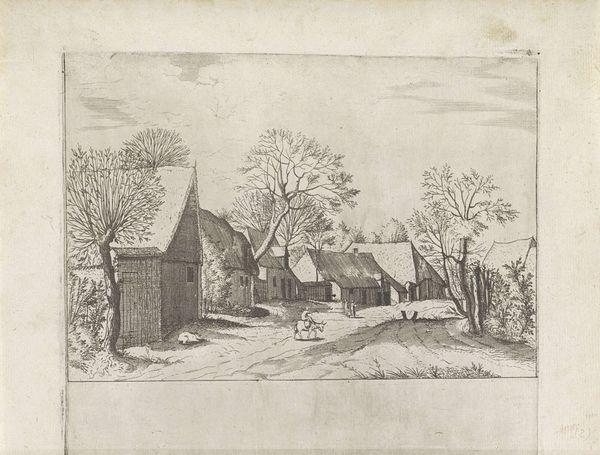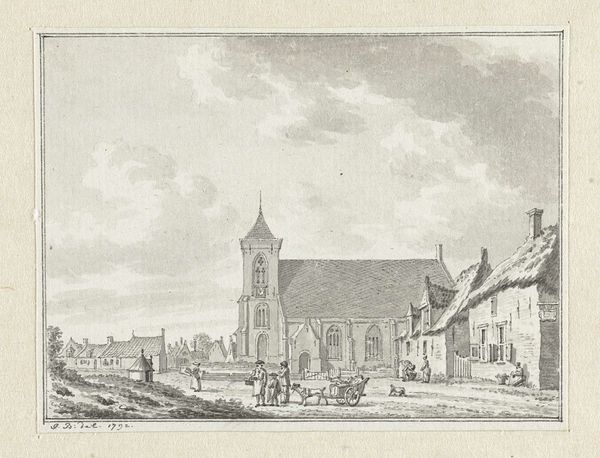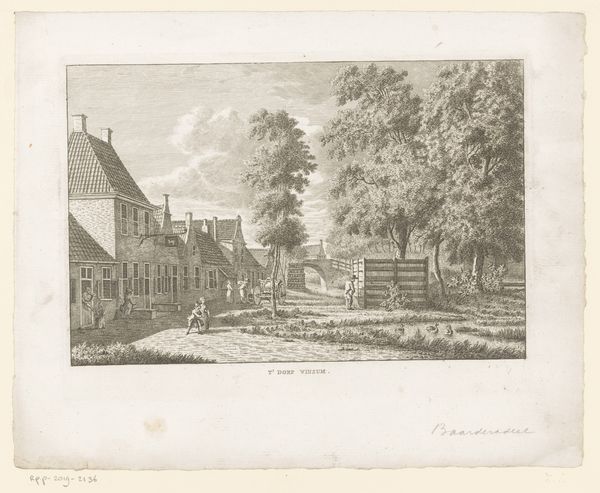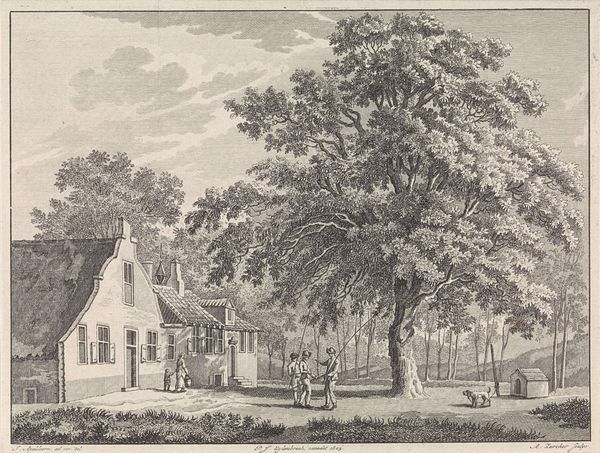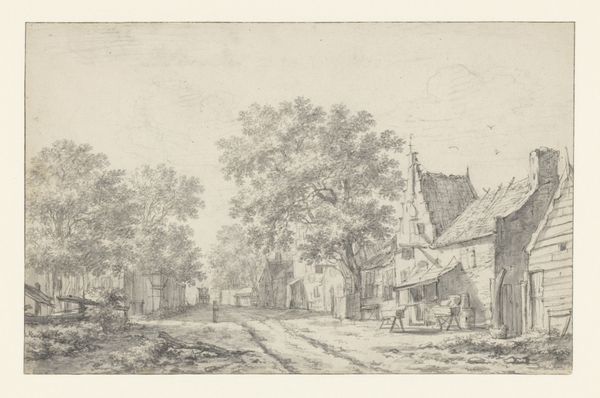
drawing, ink
#
drawing
#
landscape
#
ink
#
cityscape
#
genre-painting
#
rococo
Dimensions: height 101 mm, width 169 mm
Copyright: Rijks Museum: Open Domain
Curator: Here we have "Gezicht op het klokhuis te Overveen," or "View of the Clock House in Overveen," an ink drawing dating from about 1750 to 1780, made by an anonymous artist. It’s currently held in the Rijksmuseum. Editor: My initial reaction is a sense of gentle serenity. The subdued sepia tones create a nostalgic atmosphere, almost like peering into a faded memory. The composition is quite pleasing with the various buildings framing the street scene. Curator: The Dutch Golden Age, especially in the 18th century, was characterized by the rise of genre paintings and landscapes, celebrating the beauty of everyday life. How might this drawing, with its focus on a common village scene, reflect the values and aspirations of the time? Does this capture more than a likeness? Editor: Absolutely. The Clock House likely served as a vital focal point for the community, a marker of time, literally. The seemingly mundane choice of subject speaks to a democratizing spirit—it's the beauty of the ordinary elevated to art, accessible to a burgeoning middle class. Where is everyone, however? Its a landscape and townscape both... without almost anyone in it. It creates such a different social atmosphere than similar works during this time, more focus on a wider social picture in landscapes. Curator: It's a fantastic point to reflect on who is depicted. Its absence contributes a potent observation about Dutch social history. Who was deemed "worthy" of immortalization through art and by what measure? Consider the people typically absent in canonical depictions. How might gender, race, and class affect inclusion or exclusion? This may require us to consider the drawing and society in relation to the ethics of representation. Editor: You know, thinking of institutions, this drawing prompts a wider discussion about art, its relationship to history, and, even more broadly, how art is understood by a public that grants access or recognition to art works in return for the favor of depicting it, even implicitly. Curator: The Clock House at Overveen likely functioned not only as a timekeeper but also a place for civic or social activity in Overveen, embodying communal values that might subtly suggest a national identity during this formative period. In light of the colonial trade conducted at this time, could we extend this and interpret the drawing, as both the national and the personal come to terms? Editor: Indeed. On the one hand, the quiet village scene seemingly offers solace, the drawing's details actually reveal much deeper social dynamics about history, heritage and self. It forces the question; if it's meant to tell history... what story does this view tell, and to whom?
Comments
No comments
Be the first to comment and join the conversation on the ultimate creative platform.
